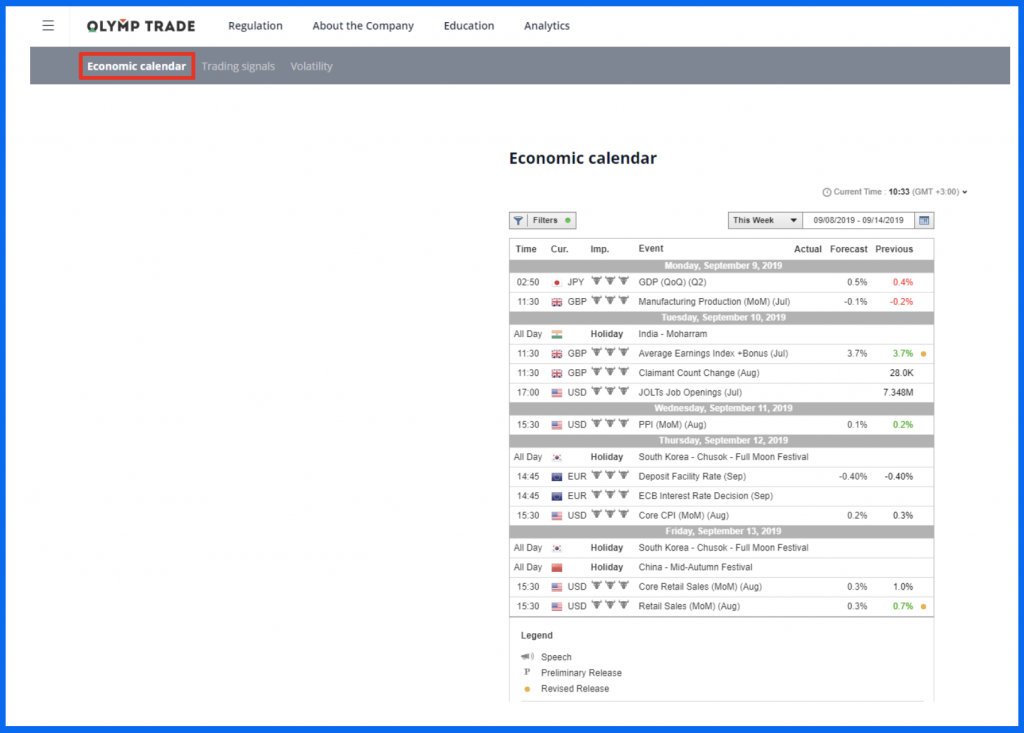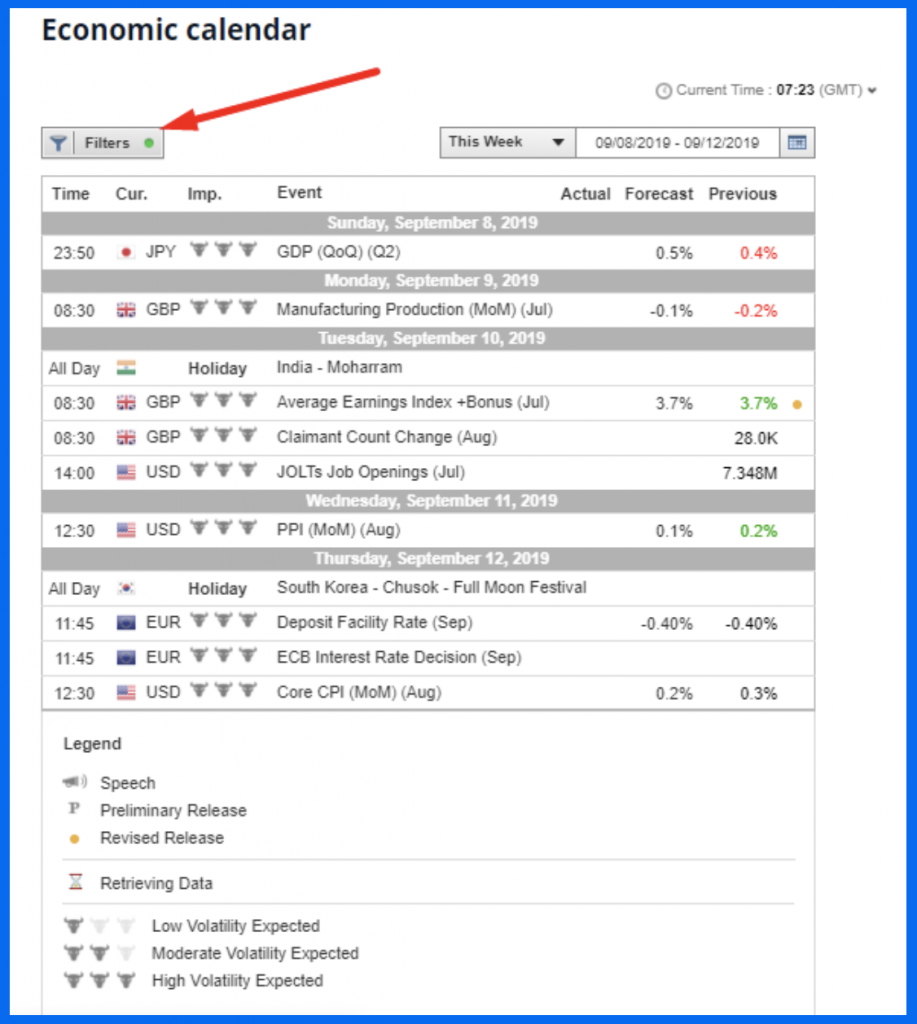Although most traders realize that financial news often determine how markets move, many don’t really understand where to find the relevant news and how it may influence the markets. It is always a good idea to be fully aware of the most current news when trading before opening any position, especially in foreign exchange markets.
Economic Calendars Explained
Economic Calendars are very handy tools that traders use when they want to open positions in foreign exchange markets. Rather than searching the headlines of numerous financial publications to find relevant news, traders can use Economic Calendars to see which financial news will be released and when it will be released.

Some of the information that can be tracked with an Economic Calendar includes government reports on trade and growth, inflation reports, unemployment rate data for non-farm payrolls, and interest rate changes. These types of reports often have an effect on real time market conditions and may create big market movements.
Why Traders Should Look at Economic Data
Specific economic data and events will have an effect different types of markets and in different ways. Traders can use fundamental analysis and improve their trading results dramatically if they understand the potential impact of this financial news. It will also help them prepare better while they’re developing the trading strategies that will ultimately lead them to independent financial success.
One example is economic news that may indicate that there is possibly a recession on the way globally, for a major European country, or for the U.S. When investors or traders pick up this type of news, they will often move their capital to Bitcoin or Gold to help prevent it from eroding due to currency exchange losses. When the U.S. recently increased tariffs on goods from China, this resulted not only in the Yuan dropping in value, but Gold’s price also rose on the news.
Another example of news that is also in the Economic Calendar is the profitability announcements from major oil companies. Bad or good news from any oil major can move the trading sentiment for WTI crude and Brent Oil. Markets secondary to oil can also be affected positively or negatively, such as any of the many USD currency pairs.
One last example of the effect of financial data on markets is the release of a country’s GDP numbers. When Canadian GDP numbers were for example better than expected, this resulted in the Canadian dollar performing better against other currencies in Forex markets.
Using the Economic Calendar
One very handy feature of Economic Calendars is that they can be customized to only show the information that is relevant to a trader and their specific trading strategies. Olymp Trade offers its clients access to a free, customizable Economic Calendar so that they can take advantage of this handy tool.

To arrange the information you want to display on Olymp Trade’s calendar based on the type of data, country, as well as the level of importance of the data, simply bring the calendar up on the screen and then click on the “Filters” button.
The calendar can also be set to display data for different time frames, such as today, yesterday, or a date range in the future to only see the type of information that has been or will be released within the selected period. This is a great tool when traders try to forecast market movements in order to take advantage of opportunities.
Important Events to Track With an Economic Calendar
There are 4 major economic news items that have the widest amount of impact on global financial markets. These are Central Bank Interest Rates, Gross Domestic Product (GDP), Employment Data and Inflation Data. Let’s discuss each of these briefly to help you understand why they are important and why they should be tracked with an Economic Calendar.
Consumer Price Index (CPI) and Inflation are ways in which we can understand the ability of a country to purchase services and goods. If a country’s growth does not outpace its prices, that’s bad news for individuals in that country.
GDP is a figure that is used to understand if the economy in a country is shrinking or growing. Although most countries usually see some growth, the amount of growth is important. If Japan’s growth for example outpaces China’s growth, it will have an effect on the exchange rate of the respective currencies. Ideally, the growth in a country should be higher than its inflation.
Central bank Interest Rate announcements. Most countries globally have a central bank that specifies at which interest rate the banks in that country loan money to each other. Although a lower interest rate is generally speaking better for economic growth, there are exceptions to this rule.
Unemployment data is an indication of whether companies are hiring more workers or not. This data is normally compare to previous data to determine if a country’s economy had no change, lost jobs, or added more jobs. This is actually often a much better indicator of how a country’s economy is really doing as opposed to looking at the GDP figures. People that don’t have a job will after all not be able to buy luxury goods such as smartphones.
The U.S. is the biggest economy in the world if Purchase Power Parity (PPP) is not taken into account. With PPP in play, China would be considered the biggest. This means that if any of the 4 pieces of economic news relate to the United States, it will have the biggest impact on all markets. The reality is that the U.S. is the economic powerhouse of the world and what happens there drives many markets, simply because they have massive consumer purchasing power.